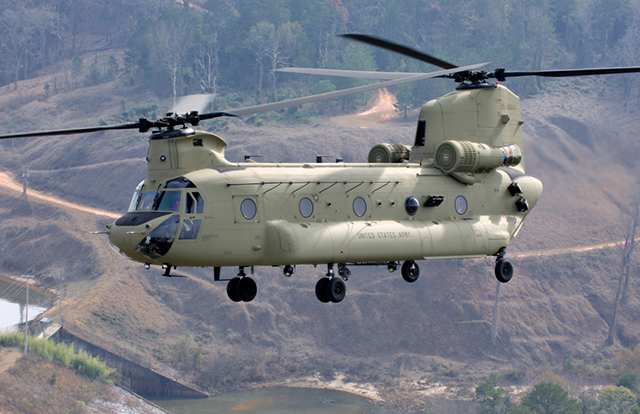New weapon systems bought from the United States form an integral part of India’s military posture and its preparations to deal with any provocation by the Chinese forces in eastern Ladakh, where both India and China are in a heightened state of readiness and tensions show no signs of easing, people familiar with developments said on Monday.
From the Indian Air Force’s C-17 heavy-lifters, Apache attack helicopters and C-130J special operations aircraft, to the India’s Navy’s P-8I surveillance aircraft and the Indian Army’s M-777 ultra-light howitzers — these weapons and systems are playing a crucial role in strengthening the Indian military’s deployments, said one of the persons cited above who asked not to be named.
IAF’s C-17 Globemaster III transport aircraft have been used to move soldiers, tanks and infantry combat vehicles to the sector, while C-130J Super Hercules aircraft have undertaken sorties to the advanced landing ground in the strategic Daulat Beg Oldie (DBO) sector to support the military’s forward deployments, said the second person on condition of anonymity.
At 16,614 feet, the DBO airstrip in north-eastern Ladakh is the world’s highest runway and is located 8km from the Line of Actual Control (LAC). The Chinese People’s Liberation Army (PLA) has mobilised troops, weapons and equipment to areas across the Depsang plains near DBO, with its forward presence aimed at disrupting the army’s patrolling patterns there.
The navy’s P-8I maritime patrol and reconnaissance aircraft have been used for surveillance of the Ladakh sector, while their primary role encompasses carrying out anti-submarine warfare, anti-surface warfare, intelligence, surveillance, reconnaissance of the oceans, said a third person aware of the matter. The P-8Is carried out similar surveillance missions during the 2017 Doklam standoff.
Apart from Sukhoi-30s and upgraded MiG-29 fighter jets, IAF is operating Apache AH-64E attack helicopters and CH-47F (I) Chinook multi-mission helicopters — both imported from the US — in the region even as forward air bases have been ordered to be on their highest state of alert to deal with any Chinese provocation.
Experts said India’s deployment in the sector — in response to the Chinese military buildup — was adequate to handle any adventurism or aggressive moves by the northern neighbour.
“A very balanced and formidable mix of Russian and new Western equipment has been deployed by the Indian military in the Ladakh sector to deal with any eventuality,” said former IAF chief Air Chief Marshal Fali H Major (retd).
The army has deployed its new US-origin M777 ultra-light howitzers, which can provide accurate artillery fire support in mountainous terrain, in eastern Ladakh. The 155 mm/39-caliber M777 howitzers, inducted only last year, can be sling-loaded to helicopters and swiftly deployed to high-altitude areas. The howitzers have a range of 24-30 km.
The Russian equipment Air Chief Marshal Major referred to includes Sukhoi-30 fighters, MiG-29 jets, Ilyushin-76 heavy-lift planes, An-32 transport planes, Mi-17 utility helicopters, T-72/T-90 tanks and BMP-2/2K infantry combat vehicles.
India has also ordered more stocks of Excalibur precision guided munitions from the US for its artillery guns, while Russia assured swifter delivery of weapons and ammunition during defence minister Rajnath Singh’s visit to Moscow last week, said the fourth person cited above.
India is pushing Russia to speed up the delivery of S-400 Triumf air defence missile systems following the tense stand-off with China. New Delhi is keen to accelerate the purchase of a mix of 33 more MiG-29s and Sukhoi-30s from Russia, and is also looking at sourcing an operational surface-to-air missile system from Israel as a 2017 order worth $2 billion for such advanced systems to take down hostile aircraft and missiles hasn’t translated into deliveries yet, he added.
India has deployed its air defence weapon systems, including the indigenous Akash, in the Ladakh region where tensions rose sharply after a brutal brawl in Galwan Valley left 20 Indian and an unconfirmed number of Chinese soldiers dead on June 15, as reported by HT on Sunday.
Both India and China have significantly reinforced their deployments with fighter jets, helicopters, tanks, heavy artillery and missiles in the region. The Indian armed forces have given the government details of critical purchases they need to make keeping in mind that the border stand-off could last weeks or even months.
Source: HT
You may also like
-
IAF Aircraft Set Course For Exercise Eastern Bridge VII At Oman
-
IAF Set To Host The Indian Defence Aviation Exposition-II At Jodhpur
-
Defence Secretary to co-chair 5th India-Philippines Joint Defence Cooperation Committee meeting in Manila
-
Simultaneous Launch Of ‘malpe And Mulki’, Fourth And Fifth Ships Of Asw Swc (Csl) Project
-
Aatmanirbharta in Defence: MoD signs Contract with HAL for 240 AL-31FP Aero Engines for Su-30MKI Aircraft
